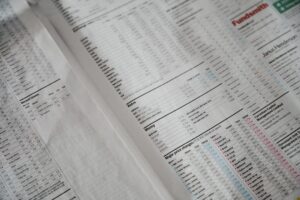The Risks and Benefits of Correlated Forex Pairs for Traders
In the world of forex trading, correlation between currency pairs is a concept that all traders should be familiar with. Correlation refers to the relationship between two or more currency pairs, and understanding this relationship can be instrumental in making informed trading decisions. In this article, we will explore the risks and benefits of trading correlated forex pairs, and how traders can navigate these relationships to their advantage.
To begin, let’s define what correlation means in the context of forex trading. Currency pairs can be positively correlated, negatively correlated, or have no correlation at all. Positive correlation means that the two currency pairs tend to move in the same direction. For example, if the EUR/USD pair is moving up, the GBP/USD pair is also likely to be moving up. On the other hand, negative correlation means that the two currency pairs tend to move in opposite directions. If the EUR/USD pair is moving up, the USD/JPY pair is more likely to be moving down.
Now, let’s look at the risks associated with trading correlated forex pairs. One of the primary risks is overexposure to a particular currency or market. When trading correlated pairs, there is a higher chance of having multiple positions in the same currency, which can lead to increased risk if that currency takes a sudden turn. For example, if a trader has positions in both EUR/USD and GBP/USD, and there is a negative news event that affects the Euro, both positions may suffer significant losses. This risk can be mitigated by diversifying across different currency pairs or by adjusting position sizes accordingly.
Another risk is false signals. Correlated pairs can sometimes give misleading signals, as the movements in one pair may not necessarily reflect the overall sentiment in the market. Traders need to be cautious and validate signals with additional analysis before making trading decisions. Additionally, when two currency pairs are highly correlated, it can be challenging to identify unique trading opportunities. Traders may find themselves in a situation where they are essentially trading the same market twice, which may limit their potential for profits.
Despite the risks, there are also several benefits to trading correlated forex pairs. One of the main benefits is the ability to hedge positions. By trading currency pairs with negative correlation, traders can offset potential losses in one position with gains in the other. For example, if a trader has a long position in EUR/USD and anticipates a potential downside, they can open a short position in USD/JPY to hedge against the risk. This strategy allows traders to protect their capital and minimize losses in volatile markets.
Another benefit is the potential for diversification. Correlated pairs can offer traders the opportunity to diversify their trading portfolios by including different currency pairs that move in similar patterns. By including correlated pairs with different base currencies, traders can spread their risk and potentially increase their chances of finding profitable trades. This strategy is especially useful when trading in uncertain market conditions or when there is limited trading opportunity in a specific currency pair.
Furthermore, understanding correlation can help traders anticipate market movements and identify trading opportunities. By monitoring the correlation between currency pairs, traders can gain insights into the overall strength or weakness of a particular currency. For example, if there is a strong positive correlation between the AUD/USD and NZD/USD pairs, and the AUD/USD pair starts to rally while the NZD/USD pair lags behind, it may indicate that the Australian Dollar is stronger than the New Zealand Dollar. Traders can then take advantage of this information by entering long positions in the AUD/USD pair.
In conclusion, trading correlated forex pairs can be both risky and beneficial for traders. While there are risks associated with overexposure, false signals, and limited trading opportunities, there are also benefits such as hedging, diversification, and the ability to anticipate market movements. It is important for traders to understand the correlation between currency pairs and use this knowledge to inform their trading decisions. By carefully managing risk and utilizing correlation to their advantage, traders can increase their chances of success in the forex market.






